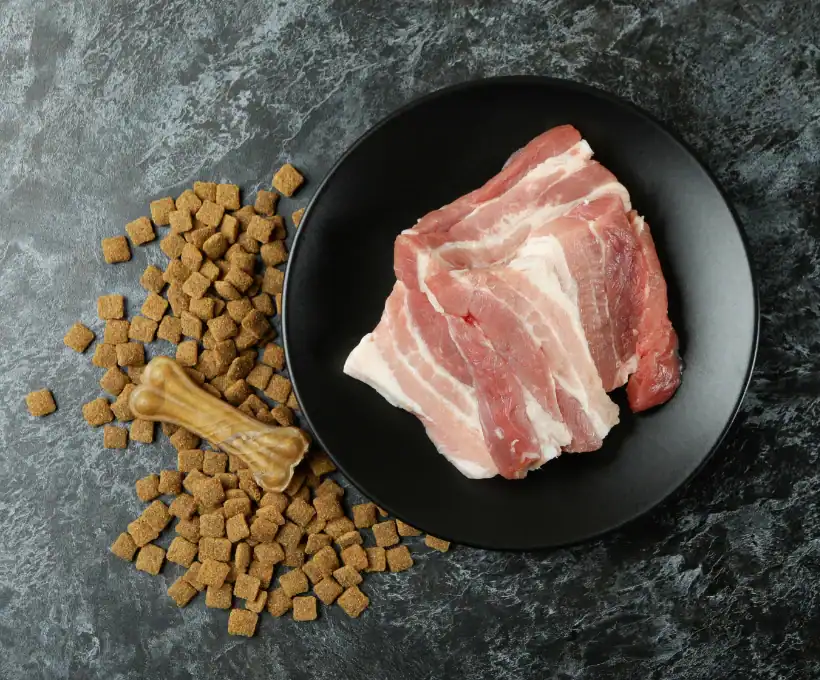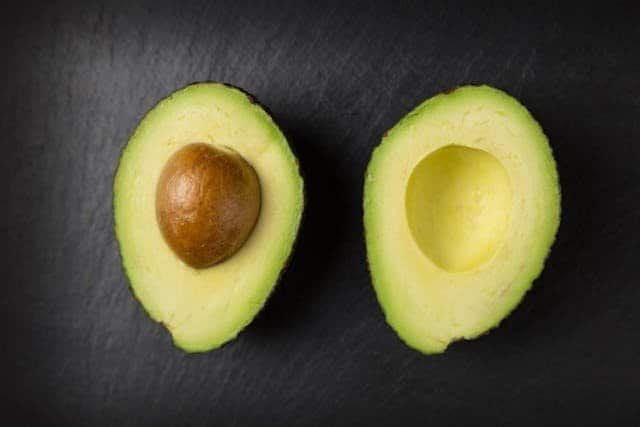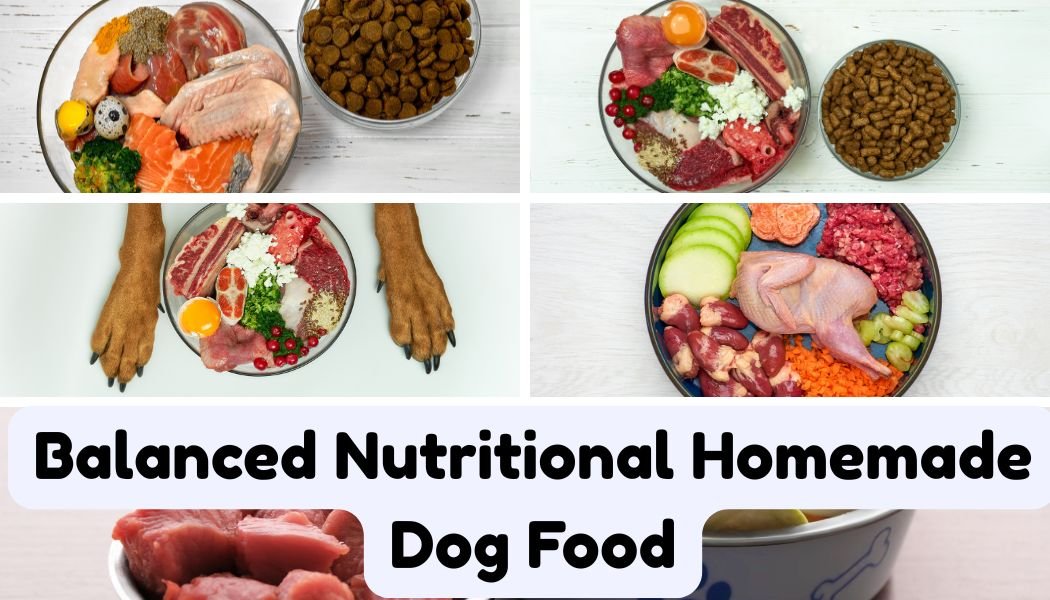Table of Contents
Why I Chose Whole Food Homemade Dog Meals and Why You Might Too
When I first switched to homemade dog food for my dog, I was overwhelmed by supplements, powders, and pills. Then I asked myself, what if I could create truly balanced meals with just real food? After research, consultations, and kitchen experiments, I learned that whole ingredients can provide everything our dogs need, if done right. No synthetic additives. No pills. Just clean, nutrient-dense food made with love. In this guide, I’ll share five carefully crafted, supplement-free homemade dog food recipes that are both balanced and delicious. We’ll also explore how to meet your dog’s daily nutrition needs with food alone. Let’s bring wellness back to the bowl; naturally.
Why Go Supplement-Free? The Whole Food Philosophy
Benefits of skipping commercial supplements: cost, simplicity, and control
Going supplement-free was honestly more of a gradual shift than a big decision. It started when I realized I was spending a ridiculous amount each month on powders, chews, and oils; all of which promised shiny coats and better joints, but honestly? I couldn’t tell if any of it was actually working.
Once I leaned into whole foods instead, things got way simpler. No more decoding confusing labels or worrying about overlapping ingredients. I could see exactly what was going into the bowl, and that gave me way more control. Plus, my grocery bill dropped. Sardines, liver, eggs; they’re cheap, easy to store, and packed with nutrients.
Risks of over-supplementing dogs unintentionally
I didn’t realize for the longest time that I was overdoing it. I was layering a multivitamin on top of a fish oil supplement, plus a “hip and joint” chew, not even thinking about how many nutrients were overlapping. It’s super easy to forget that dogs don’t flush out excess of certain fat-soluble vitamins the way humans might. Vitamin A, D, and copper; all that stuff can build up.
There were signs, but I missed them at first. Some loose stools, dry skin, and low appetite. I blamed it on everything except the supplements. A holistic vet eventually pointed out I was probably doubling up. That was the lightbulb moment that got me off the supplement train.
Whole food sources that naturally provide key nutrients
Switching to real food made me feel a lot more confident. Everything served had a purpose. For vitamin A and iron, I started rotating beef or chicken liver once a week. For omega-3s, sardines packed in water (no salt) did the job perfectly. Calcium comes from ground eggshells, making it super easy to bake, crush, and store.
Pumpkin was another favorite. Not only did it help with digestion, but it’s rich in beta carotene and fiber. I also added cooked kale or spinach in small amounts for magnesium and trace minerals. And for antioxidant support? Blueberries. Cheap, frozen, and dogs love them.
No gimmicks, just actual food. It’s honestly kind of wild how well nature takes care of the nutritional checklist when you put the right ingredients together.

Real-world results: what happened when I went 100% supplement-free
The results weren’t overnight, but within a few weeks, things were noticeably better. Coat texture improved. Digestion evened out. And energy levels became more stable; no mid-day crashes, no sudden sluggishness after meals.
But the best part? A routine vet check showed healthy weight, improved muscle tone, and excellent lab results across the board. Bloodwork confirmed that nutrient levels were right where they should be, without a single synthetic additive in the bowl.
It wasn’t just about saving money or simplifying routines (though that was a huge bonus). It was about feeling like I was finally feeding in a way that matched a dog’s natural biology. Whole food nutrition gave me peace of mind that no powder ever could.

Essential Nutrients Every Dog Needs; And Where to Find Them in Food
Proteins: eggs, turkey, beef, chicken, liver
Protein is the one thing I never mess with when it comes to feeding dogs. If there’s one lesson I learned early on, it’s that real, high-quality protein is non-negotiable. I used to rely heavily on kibble, thinking the “crude protein” number on the label told the whole story. Spoiler: it doesn’t.
These days, I rotate proteins regularly; eggs for a quick, complete protein boost; ground turkey when I want something lean; and chicken thighs when I want extra fat. Liver? That’s the nutritional jackpot. I use it sparingly, maybe once or twice a week, because it’s loaded with vitamin A and iron. Beef’s another go-to, especially when I’m prepping in batches. Raw or cooked, variety’s the key.
Carbohydrates: oats, quinoa, brown rice, sweet potatoes
I know there’s a lot of debate about whether dogs need carbs, but in my experience, the right ones can make a big difference. I noticed that when I included complex carbs like oats and quinoa, energy levels got more consistent, especially for active dogs. Plus, it helps stretch the budget.
Brown rice is one of my standbys because it’s affordable and easy on the stomach. Sweet potatoes are another favorite; not only do they add fiber, but they’re naturally rich in beta carotene. I usually steam or roast them and toss them into the bowl with whatever protein I’m using.
Fats: chicken fat, fish, eggs, flaxseeds
Fats used to scare me a little, mostly because I didn’t want to cause weight gain or tummy issues. But turns out, good fats are essential for skin, coat, brain function, and energy. I started noticing drier skin and more shedding when meals were too lean.
Now, I always make sure there’s a healthy fat source in the mix. Chicken skin and fat (trimmed, but not removed entirely) gets used often. Fish like mackerel or sardines are incredible, loaded with omega-3s. Eggs are a two-for-one deal: protein and fat. And when I want a plant-based boost, I grind flaxseeds fresh. The oil goes rancid quickly, so the whole seed (lightly ground) is best.
Calcium and phosphorus from ground eggshells, bone-in fish, and leafy greens
Balancing calcium and phosphorus was probably one of the trickiest parts when I ditched supplements. It’s easy to overlook, but super important for bone health and muscle function.
I started using ground eggshells as a natural calcium source. I just bake the shells at low heat, crush them in a coffee grinder and sprinkle a small amount into meals. For phosphorus, bone-in fish like canned sardines or mackerel are ideal (just make sure they’re packed in water, no salt). I also throw in some finely chopped leafy greens like kale or collard greens; they help round things out.
Natural vitamins: Vitamin A (liver, carrots), Vitamin E (sunflower seeds), B vitamins (eggs, organ meat)
Vitamins can be sneaky; you don’t always realize they’re missing until something looks “off.” A dull coat, low energy, and even weird licking behavior can sometimes trace back to vitamin deficiencies.
To cover my bases naturally, I started building meals with ingredients that naturally carry these essentials. Liver and carrots are my go-to for vitamin A. For vitamin E, I add a pinch of raw sunflower seeds (crushed). Eggs, plus organ meats like kidney or heart, are goldmines for B vitamins. Just be sure not to overdo organ meat; too much can throw things off.
Hydration: broths and water-rich ingredients
Hydration is something I overlooked for years. I used to assume that if there was a water bowl nearby, I was good. But when switching to homemade meals, I realized dogs get a lot of hydration from food itself.
I started adding homemade broths (no onions or added salt) to meals, either chicken or beef. It adds flavor and moisture, especially when food is stored in the fridge and gets a little dry. Water-rich veggies like zucchini and cucumber help too. And if I’m serving raw or lightly cooked meat, I don’t drain the juices. That moisture matters.
5 Balanced Homemade Dog Food Recipes Without Supplements
When I first ditched commercial supplements, I panicked a little. Like, how was I supposed to cover everything with just food? It sounded overwhelming at first, but once I started experimenting in the kitchen, things clicked. These five recipes came from a ton of trial and error, some late-night Googling, and a few minor disasters (don’t ask about the time I didn’t mash the lentils enough…). But they’ve become staples in my homemade dog food routine.
I rotate through these depending on what’s in the fridge or what needs to be used up. They’re all balanced using whole food ingredients and hit the major nutritional needs without needing a single supplement.
Recipe 1: Beef & Veggie Power Bowl
• 1 lb ground beef (80/20)
• 1/2 cup cooked brown rice
• 1/2 cup finely chopped spinach
• 1/2 cup grated carrots
• 1 tbsp ground flaxseed
• 1/2 crushed eggshell (for calcium)
• Instructions: Cook beef fully. Mix all ingredients. Cool before serving.
This one’s a classic. Super simple, and the beef adds a nice fatty richness that dogs really seem to enjoy. I usually cook everything in one pan (less cleanup), then stir in the veggies raw or lightly steamed to retain more nutrients. The crushed eggshell takes a bit of prep; you’ll want to bake it at low heat first to kill any bacteria, then grind it up really fine. Calcium matters, and this combo gets the balance right.
Recipe 2: Chicken, Pumpkin & Quinoa Medley
• 1 lb chicken thighs (skin removed)
• 1/2 cup cooked quinoa
• 1/4 cup canned pumpkin (plain)
• 1/2 cup steamed green beans
• 1 boiled egg (chopped)
• Instructions: Cook chicken and quinoa. Mix with the remaining ingredients.
This one’s great when digestion seems off. Quinoa is a complete protein and easier on the stomach than I expected. I go with boneless thighs because they’re budget-friendly but still moist and flavorful. The pumpkin is a lifesaver for gut health; just make sure it’s the plain canned kind, not the pie filling with added sugar.
Recipe 3: Sardine & Sweet Potato Balance Bowl
• 1 can of sardines in water (with bones, no salt)
• 1/2 cup mashed sweet potato
• 1/2 cup cooked oatmeal
• 1/2 cup chopped kale (lightly steamed)
• 1 tbsp olive oil
• Instructions: Mix all ingredients thoroughly. Let cool and portion.
The first time I opened a can of sardines, I won’t lie; I gagged. But dogs? They go wild for it. Sardines are packed with omega-3s and calcium from the bones. Sweet potato adds fiber and a touch of sweetness. I steam the kale just enough to soften it without killing all the nutrients, and the olive oil gives a healthy fat boost.
Recipe 4: Turkey & Rice Digestive Soother
• 1 lb ground turkey
• 1/2 cup cooked white rice
• 1/2 cup chopped zucchini
• 1/4 cup shredded apple (peeled, seeds removed)
• 1 tsp ground eggshell (baked & crushed)
• Instructions: Cook turkey and rice. Mix with raw or steamed produce.
This one’s my go-to when the gut seems out of whack. The white rice is easy to digest, and the turkey is super lean. I leave the zucchini raw or lightly steamed, depending on what my dog tolerates better. The apple gives a little crunch and natural sweetness; just be sure to remove every bit of core and seeds (those can be toxic).
Recipe 5: Egg & Lentil Vegetarian Option
• 2 boiled eggs
• 1/2 cup cooked lentils (well-rinsed)
• 1/2 cup shredded carrots
• 1/2 cup cooked brown rice
• 1 tbsp sunflower seeds (crushed)
• Instructions: Mix all ingredients together. Ensure lentils are soft and fully cooked.
I don’t feed vegetarian food every day, but it’s good to have options when meat is low or pricey. Lentils are surprisingly high in protein and fiber, and the eggs round out the amino acid profile. The trick is cooking the lentils all the way; undercooked ones are a recipe for gas (and you do not want that in your house). I crush the sunflower seeds right before mixing to preserve the vitamin E content.
How to Ensure Balance Without Supplements
I used to stress way too much about whether my homemade meals were hitting all the nutritional marks. Without bottles of vitamins and powders to fall back on, I worried I was missing something essential. But over time, I realized balance doesn’t have to come from every single meal; it can come from the overall pattern of feeding over the week. Here’s what I’ve figured out along the way.
Rotating recipes to avoid nutrient gaps
The first mistake I made? Feeding the same chicken-and-rice combo for two weeks straight. It was easy, cheap, and my dog loved it, but nutritionally? A bit of a disaster. That’s when I learned that rotation is key. Just like we wouldn’t eat spaghetti every day and expect to stay healthy, dogs need variety too.
Now I plan 3–4 different recipes each week and rotate proteins, veggies, and carb sources. One day might be turkey with sweet potato, another day might be sardines with oatmeal and kale. Mixing things up prevents deficiencies and supports better digestion, too; variety really is nature’s safety net.
Pairing recipes to create weekly balance (e.g., liver once per week)
Not every meal needs to be 100% balanced on its own. I used to obsess over this, and it drove me nuts. What matters more is that the week as a whole provides complete nutrition. For example, I only include liver once or twice a week; it’s super rich in vitamin A and iron, so more than that can be too much.
I’ll pair a liver-based bowl early in the week with lighter meals like egg and quinoa later on. It’s about creating a rhythm. Some meals are more protein-heavy, others lean on fiber or fat. If you think in terms of the big picture, it’s easier and less overwhelming.
Adjusting portions by dog size and energy level
This part took trial and error. One of my dogs is a couch potato who gains weight just looking at food, while the other is constantly moving. Feeding them the same portions (which I definitely did early on) led to weight issues; one was too heavy, the other too thin.
Now I adjust based on activity. I use body condition scoring as a rough guide. For active dogs, I add an extra 1/4 cup of carbs or fat-rich ingredients. For lower-energy pups, I cut down on the starch and boost protein to keep them satisfied without overdoing the calories.
How to monitor coat, weight, energy, and stool for signs of balance
The best tool I have? Observation. No lab tests, no spreadsheets; just paying attention. I look at coat shine (dry or flaky could mean a fat deficiency), energy levels (sluggishness could mean too few calories or low B vitamins), and of course… stool.
It sounds gross, but stool tells the whole story. If it’s consistently firm and easy to pick up, that’s a good sign things are on track. Runny, overly dry, or foul-smelling stools usually mean something’s off; either too much fat, not enough fiber, or an ingredient that doesn’t agree. Adjusting from there becomes second nature once you know what to look for.
When to include nutrient-dense treats like eggs or liver sparingly
I used to toss in eggs or liver as daily “extras,” thinking more nutrients = better health. Not quite. Too much liver can lead to vitamin A toxicity, and while eggs are amazing (loaded with fat, protein, and B vitamins), they can throw off balance if added too often.
Now I treat those as boosts. One boiled egg, 2–3 times a week, is plenty. Liver, as mentioned, once or twice weekly, paired with leaner meals. They’re like nature’s multivitamins, but just like human supplements, moderation is everything.
Weekly Feeding Plan Using These Recipes
Written in the same friendly, experienced, first-person narrative style, using your exact subheadings, and packed with specific, helpful info from the perspective of someone who’s lived through the trial and error.
When I first started cooking meals from scratch, I was winging it every day; fridge open, dog staring at me, and me thinking, What the heck do I feed today? It was chaotic. But once I got into a routine with weekly planning, everything got smoother. No more guesswork, no scrambling at mealtime, and way less stress about balance.
7-day schedule example using the 5 recipes
Here’s how I typically rotate the five supplement-free recipes across a week to keep things balanced and interesting:
Monday: Beef & Veggie Power Bowl
Tuesday: Chicken, Pumpkin & Quinoa Medley
Wednesday: Sardine & Sweet Potato Balance Bowl
Thursday: Turkey & Rice Digestive Soother
Friday: Egg & Lentil Vegetarian Option
Saturday: Repeat a favorite or mix two small portions (leftovers work great here)
Sunday: Liver-based version of Beef Bowl (swap 25% of the beef for liver)
This schedule hits protein variety, rotates fiber sources, spreads out calcium-rich ingredients, and keeps nutrient-dense items like liver spaced properly. It also makes shopping easier; I know exactly what to buy every week.
How to incorporate raw meaty bones or eggshells for calcium
Calcium’s one of those things you don’t want to mess up; too little and bones suffer, too much and kidneys get overwhelmed. I don’t feed raw bones daily, but a few times a week I’ll offer a small raw meaty bone, like a chicken neck or wing (never cooked; they splinter). They’re great for teeth, too.
On days without bones, I use baked, ground eggshells. I save shells from eggs used during the week, bake them at 250°F for about 20 minutes, then grind them into powder. A small pinch (about 1/2 teaspoon per pound of food) goes into meals that don’t already contain bone-in fish or bone treats.
Safe food prep and storage tips (3-day fridge rule, freezer tips)
If I’ve learned anything, it’s that homemade dog food is basically like prepping family meals. I follow the same food safety rules; nothing sits in the fridge longer than 3 days. After that, bacteria risk goes way up.
What I do is portion meals into reusable containers: three go in the fridge, the rest in the freezer. I label everything with the date and recipe type to avoid confusion. To thaw, I pull out the next day’s meal the night before and stick it in the fridge. Never leave it on the counter; trust me, I learned the hard way.
Using Sunday as batch cook day for the week ahead
Sunday is officially dog meal prep day. I throw on a podcast, boil some rice, steam veggies, bake the eggshells, and cook the proteins. It takes about 90 minutes, maybe two hours if I’m chatting too much with family while doing it. Totally worth it.
Having everything ready for the week saves a ton of stress. I portion meals into daily containers, and if I have extra, I freeze a few in case something unexpected comes up. I also prep any broths or hydration boosters, like veggie stock (no onions or garlic, which are toxic to dogs).
How to adjust amounts as seasons or energy needs change
This part took me a while to figure out. During colder months or when we’re doing more hikes, I’ve noticed that dogs burn through food faster. One even lost a bit of weight, which was my clue to increase portions.
In summer, when activity drops and temps are higher, I cut back by about 10–15% to prevent weight gain. I also add more hydration; extra water, cucumber slices, or ice cubes in the bowl. Watching for body condition, rib coverage, waistline, and muscle tone helps me fine-tune portions way better than sticking to a fixed cup measurement.
Foods to Avoid in Homemade Dog Food
When I first started making homemade meals, I assumed that if a food was healthy for me, it was probably fine for my dog, too. Big mistake. Some foods that are staples in our kitchens can be harmful, or even deadly, to dogs. Over time, I learned to double-check every ingredient and err on the side of caution. Here’s what I now keep out of every recipe I prepare.
Common toxic ingredients: garlic, onions, grapes, and chocolate
These might seem obvious, but they can sneak into meals in subtle ways. Garlic and onions, even in powdered or cooked form, damage red blood cells and can lead to anemia over time. That includes broth powders, marinades, and seasoning blends.
Grapes and raisins are another no-go. Even a small amount can cause kidney failure in some dogs, and there’s no way to predict sensitivity. And chocolate? It’s not just about caffeine; it contains theobromine, which dogs can’t process. Avocado is toxic to dogs; I don’t let any of these near my cutting board when I’m prepping food.

Gas-producing or indigestible foods: beans, corn, dairy
Dogs digest differently than we do, and I learned quickly that just because beans or corn are cheap fillers in commercial food doesn’t mean they belong in homemade meals. Beans often cause gas and bloating, and corn is hard to digest and offers little nutritional value.
Dairy is another tricky one. Some dogs tolerate small amounts of plain yogurt or cheese, but others end up with loose stools or itchy skin. I avoid it altogether unless I know for sure a dog handles it well, and even then, I keep it minimal.
Bones that can splinter (cooked chicken bones)
Never, ever give cooked bones. Once they’ve been heated, especially in the oven or microwave, bones become brittle and splinter easily. These sharp fragments can tear the esophagus or intestines or cause choking.
If I’m feeding bones, they’re raw and always supervised. Otherwise, I stick to calcium sources like crushed eggshell or ground bone powder. Cooked chicken bones, turkey drumsticks, pork ribs are extremely dangerous to dogs due to splintering; all of these stay out of the kitchen when I’m prepping.
Excessive fats or sodium-rich ingredients
It’s easy to overlook fats when trimming meat, but too much fat can lead to pancreatitis. I trim visible fat from beef and skin from poultry before cooking. I also avoid fatty cuts like pork belly unless it’s for a special treat in very small amounts.
Processed meats like bacon, deli slices, or sausages are also packed with sodium and preservatives. Dogs don’t need the salt, and their kidneys have to work harder to process it. I stick to fresh, whole meats and avoid anything that comes pre-seasoned or cured.
Why avoiding store-bought broths and sauces is important
I used to think adding a splash of chicken broth would enhance flavor, but most commercial broths are loaded with onion, garlic, salt, and preservatives. Even the “low sodium” versions often contain hidden ingredients that aren’t safe for dogs.
Now, I make my own broth when I want extra flavor. A basic simmered batch with meat scraps, carrots, and water (no seasoning) works perfectly. It adds hydration, helps picky eaters, and gives me peace of mind knowing exactly what’s in it.
Tools and Ingredients for Simplified Cooking
When I committed to cooking meals regularly, I quickly realized the right tools could make or break the process. In the beginning, I juggled old pans and random containers, but once I invested in a few essentials, cooking became smoother, faster, and a lot more enjoyable. Here’s what I rely on in my kitchen, and how I keep things organized for consistency and safety.
Basic essentials: stainless steel pots, food scale, cutting board
The foundation of my setup starts with quality basics. A few large stainless steel pots help me batch-cook meals without worrying about aluminum or nonstick coatings leaching into the food. I use one pot for meats and another for grains or veggies when cooking in parallel.
A digital food scale is a must for accurate portioning. Whether I’m dividing meals by weight or calculating protein content, it removes guesswork. And I keep a dedicated cutting board just for dog food prep to avoid cross-contamination with my own ingredients.
Handy extras: slow cooker, blender for pureeing, all-in-one dog food maker
A slow cooker changed the game for me. It lets me toss in meats, grains, and veggies in the morning and come back to fully cooked meals by evening, with minimal effort. It’s especially helpful for tougher cuts or dense starches like sweet potatoes.
When I need to make food easier to digest or create texture for sensitive eaters, I use a blender or immersion stick blender to lightly puree cooked ingredients. It’s also great for incorporating broths.
You can also use an all-in-one dog food maker, which cooks and blends in the same container. While not a must-have, it saves time and dishes when making in one pot.
Storage: BPA-free containers, freezer-safe meal trays
Safe storage is key to preserving nutrients and keeping food fresh. I use BPA-free plastic containers for short-term fridge storage (up to 3 days) and freezer-safe silicone trays for long-term meals. Silicone makes it easy to pop out pre-portioned servings.
For travel or quick feeding, I prepare individual meals in reusable, leak-proof containers that stack neatly in my fridge or cooler. Labeling each one with a date keeps me organized and helps rotate meals correctly.
Where to buy affordable whole ingredients in bulk
Cost adds up fast if you’re sourcing food from regular grocery chains. I’ve had better luck buying ingredients in bulk from:
- Wholesale clubs (for meats, grains, eggs)
- Local butchers or farm co-ops (especially for organ meats and raw bones)
- Asian and ethnic grocery stores (for inexpensive cuts like turkey necks or fish heads)
- Online bulk retailers (for items like flaxseeds or rolled oats)
- Buying in large quantities and freezing portions has saved me both time and money.
Keeping a dog food journal to track ingredient rotation
I didn’t start with a food journal, but once I did, it became one of my most useful tools. I use it to record each batch’s ingredients, cook date, and any reactions I notice (energy, coat shine, stool changes). This helps me rotate protein sources and avoid overusing ingredients like liver.
Over time, the journal revealed patterns I couldn’t have tracked by memory alone, like which combos boosted energy or which grains caused bloating. Now, every feeding plan I make is rooted in real feedback, not just guesswork.
Feeding with Purpose: The Natural Path to Canine Wellness
Creating balanced, nutritional homemade dog food without supplements is more achievable than most people think. By choosing the right variety of whole ingredients, rotating meals, and monitoring your dog’s health, you can craft nourishing recipes that fuel your pup for years to come. These five recipes are just the start; use them as your foundation and expand based on your dog’s preferences. Forget the pills and powders; you already have everything you need in your kitchen. Let’s cook with confidence and love.
FAQ Section
Can I really meet all my dog’s nutritional needs without supplements?
Yes, it’s possible to meet your dog’s nutritional requirements using whole foods alone if recipes are properly planned and varied. Nutrients like calcium, essential fatty acids, and vitamins can be sourced from eggshells, organ meats, leafy greens, and healthy fats. Regular rotation and balance are key.
How do I know if my dog is getting enough calcium without a supplement?
Crushed eggshells (baked and ground) or bone-in fish like sardines provide a natural source of calcium. You can use a small kitchen scale to measure precise amounts. If you’re unsure, consult a vet to monitor your dog’s bone health over time.
How often should I rotate recipes?
Rotating meals every 2–3 days or weekly ensures your dog gets a broad range of nutrients. Include different proteins (beef, turkey, sardines), carbs (quinoa, rice, oats), and vegetables to avoid deficiencies from eating the same meal daily.
Are there risks if I don’t use supplements?
The main risk is nutrient imbalance, but this can be avoided with careful planning. Over-supplementation can also cause harm, so sticking to diverse, whole-food recipes is a safer route for many owners when done properly.
What’s the best way to store homemade dog food?
Homemade dog meals should be stored in airtight containers. Refrigerate portions for up to 3 days or freeze for up to 2 months. Label each batch with the recipe and date for rotation and safety.
Disclaimer: This blog post contains affiliate links





